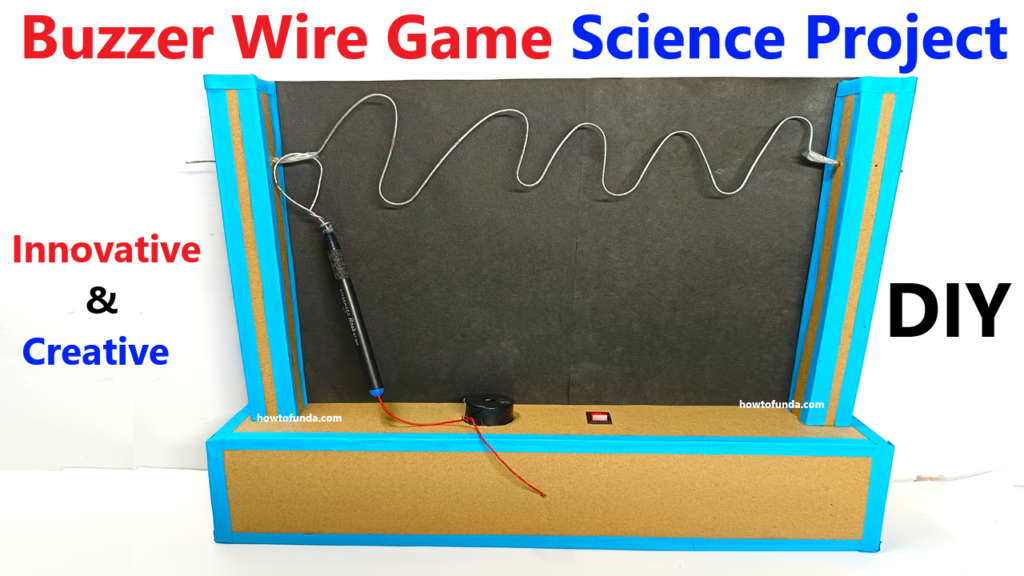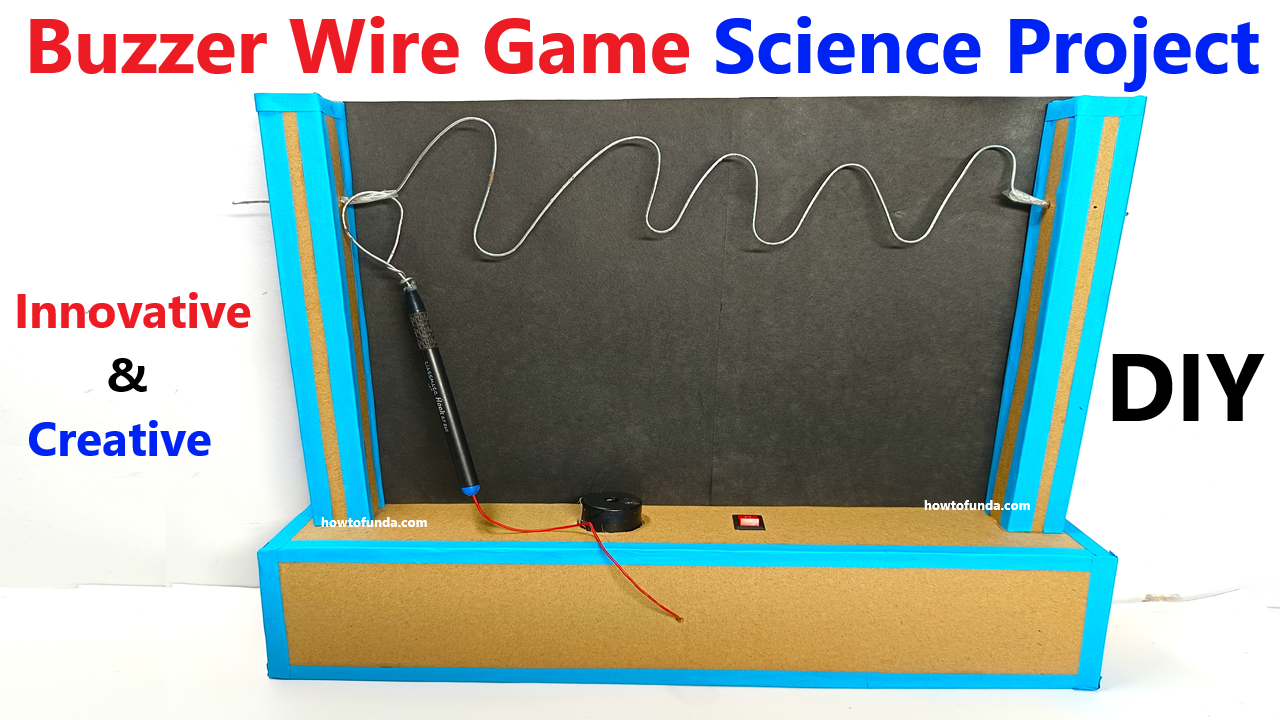Objective:
To build a fun and interactive buzzer wire game that tests steadiness and hand-eye coordination using simple electrical components.

Materials Required:
- GI metal wire (to create the game path)
- 9V battery and battery clip
- Buzzer
- Switch (to turn the game on/off)
- Insulated wire (for connections)
- Cardboard (as the base)
- Color paper (for decoration)
- Small metal loop (to serve as the player’s wand)
- Glue, tape, and scissors
Steps to Build Buzzer Wire Game Science Project:
- Prepare the Base:
- Cut a piece of cardboard to serve as the base of your project.
- Cover it with color paper to make it visually appealing.
- Create the Wire Path:
- Bend the GI metal wire into a wavy or zigzag path. Make it challenging but not too difficult.
- Attach the wire firmly to the cardboard using supports or holes poked into the cardboard.
- Build the Wand:
- Form a small loop using a piece of metal wire. The loop should be slightly larger than the width of the game path.
- Attach this loop to an insulated wire. This will act as the player’s wand.
- Set Up the Circuit:
- Connect one end of the GI metal wire (the game path) to the positive terminal of the 9V battery via the switch.
- Connect the other end of the GI wire to the positive terminal of the buzzer.
- Connect the negative terminal of the buzzer to the negative terminal of the battery.
- Attach the player’s wand (metal loop) to the circuit by connecting its insulated wire to the negative terminal of the battery.
- Add a Switch:
- Install a switch between the battery and the circuit to allow players to turn the game on/off easily.
- Test the Circuit:
- When the metal loop (wand) touches the GI wire, the circuit should close, causing the buzzer to sound.
- Decorate the Model:
- Add color paper, stickers, or designs to make the base and surroundings attractive. Label the components for clarity if used as a science project.
How to Play:
- Turn on the switch to power the circuit.
- Move the metal wand along the GI wire path without letting it touch.
- If the wand touches the wire, the circuit closes, and the buzzer sounds, indicating an error.
- The challenge is to complete the path without triggering the buzzer.

